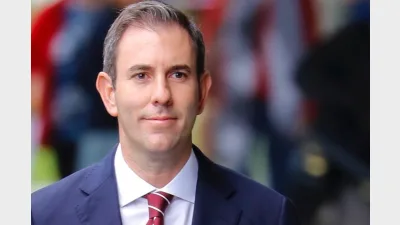(April-2004) Why mutual funds have all the vision
The future of industry superannuation lies in the continuation of its mutual ownership, and in the ability of industry super funds to consistently maximise investment returns in the lowest cost environment.
It is because of the trustee representation system, which ensures all profits to members, that industry super funds are able to deliver on our promise to sustain our current outperformance into the future.
The industry funds have already done the groundwork for the creation of a diversified financial institution of considerable substance in banking, funds management and retail financial services strongly linked to the industry funds administration.
The future for industry super funds lies in their continuing the process of building an alternative all-finanz network based on the guiding principles of:
n mutual ownership, ie. all profits to members
n low cost delivery
n workplace focused distribution
The all-finanz vehicle for this transformation is Members Equity (ME), which has a potential market reach through industry funds’ six to seven million members.
This alternate all-finanz network can use its collective power for continual pioneering in the delivery of superannuation and non-super services in a major way. As a major force in the financial life of this country, the new mutuals will also force commercial providers into genuine competition.
In 2006, Members Equity, with more than $10 billion in assets under management, looks likely to absorb the enlarged IFS.
These mergers enable, amongst other things, the consolidation of the industry funds’ fund management businesses into a diversified offering, with almost $5 billion under management.
IFS has published for the third time its running results based on the net performance of industry super funds and commercial funds.
The current figures up to the end of calendar 2003, which track the net result for an average member, that is, after stripping away all the opportunities for glossing and distorting the truth, are as devastating for the commission-driven master trusts as the previous figures for the financial year.
According to these results, the ratio of net earnings to fees for the averaged industry fund is 8.2:1 and the averaged retail fund is 0.9:1. If every working Australian understood this reality, the commercial super fund sector would wither overnight.
Demographics don’t lie. How are we as a community planning to sustain private pensions into the future if the choice of asset classes remains as limited as it is today? If all the world’s baby boomers’ trillions are directed into the ASX, FTSC, Nasdaq, or the Nikkei Indexes, these share markets are likely to bubble and burst or at least underperform as traditional companies become fat and lazy.
Industry funds have an obligation to provide income in retirement for their members. Long term returns depend on industry funds continuing to develop new investment vehicles, such as alternate infrastructure, social infrastructure, renewable energy and water and wastage recycling.
It is precisely because of their mutual status that the industry super funds can pursue these new avenues for the common good of their members. Their commercial competitors are too focused on immediate returns to shareholders — as is their legal obligation — to think and act in the long term interest of super fund members and the community.
— Garry Weaven is the Chair of Industry Fund Services
Recommended for you
The major changes to the proposed $3 million super tax legislation have been welcomed across the superannuation industry.
In holding the cash rate steady in September, the RBA has judged that policy remains restrictive even as housing and credit growth gather pace.
A new report warns super funds must rethink retirement readiness as older Australians use super savings to pay off housing debt.
An Australian superannuation delegation will visit the UK this month to explore investment opportunities and support local economic growth, job creation, and long-term investment.









